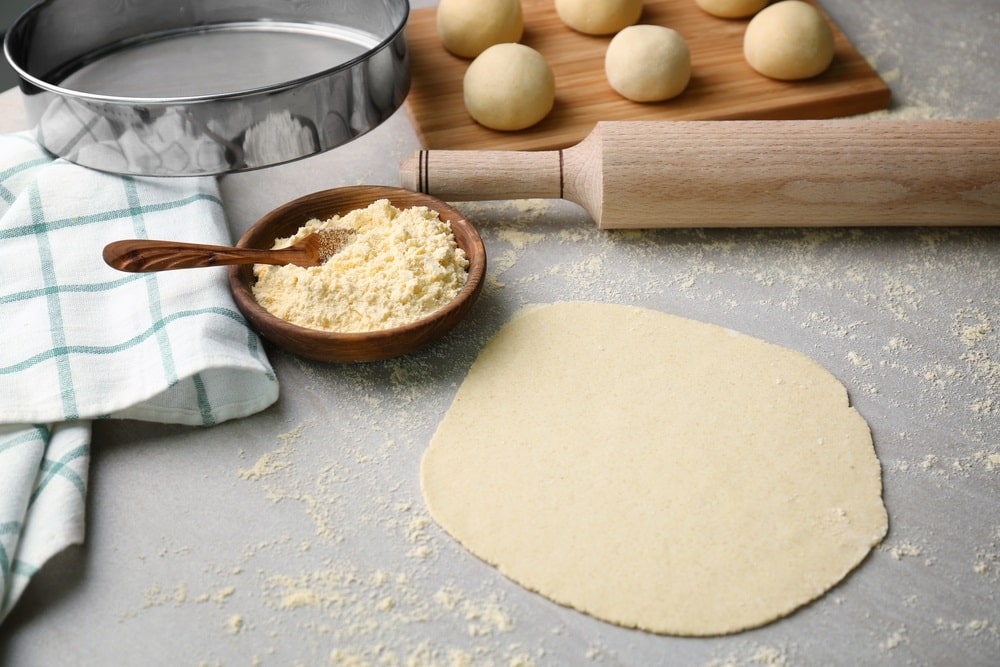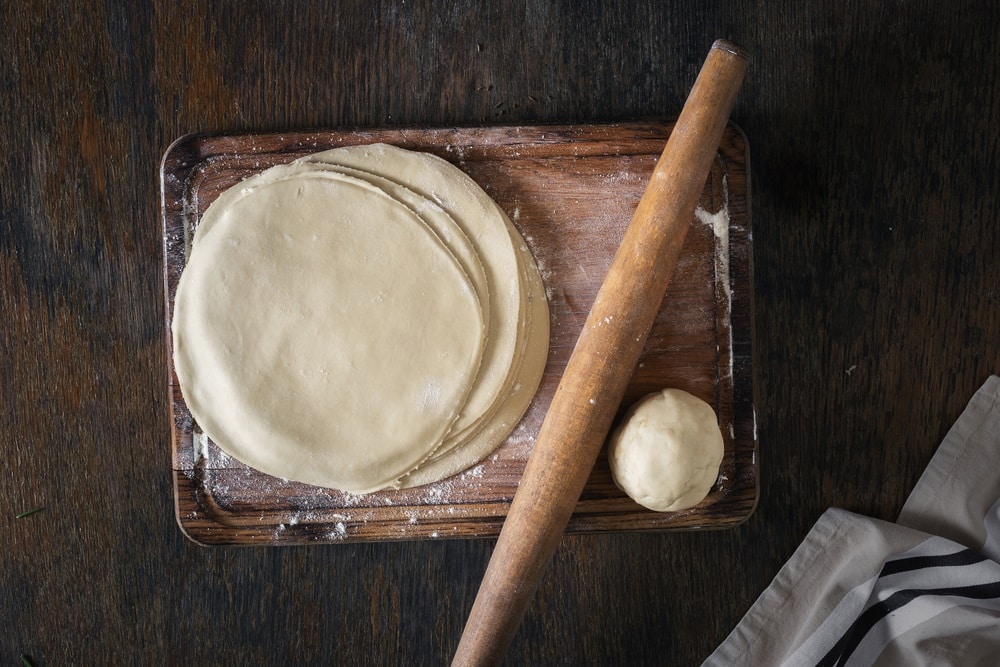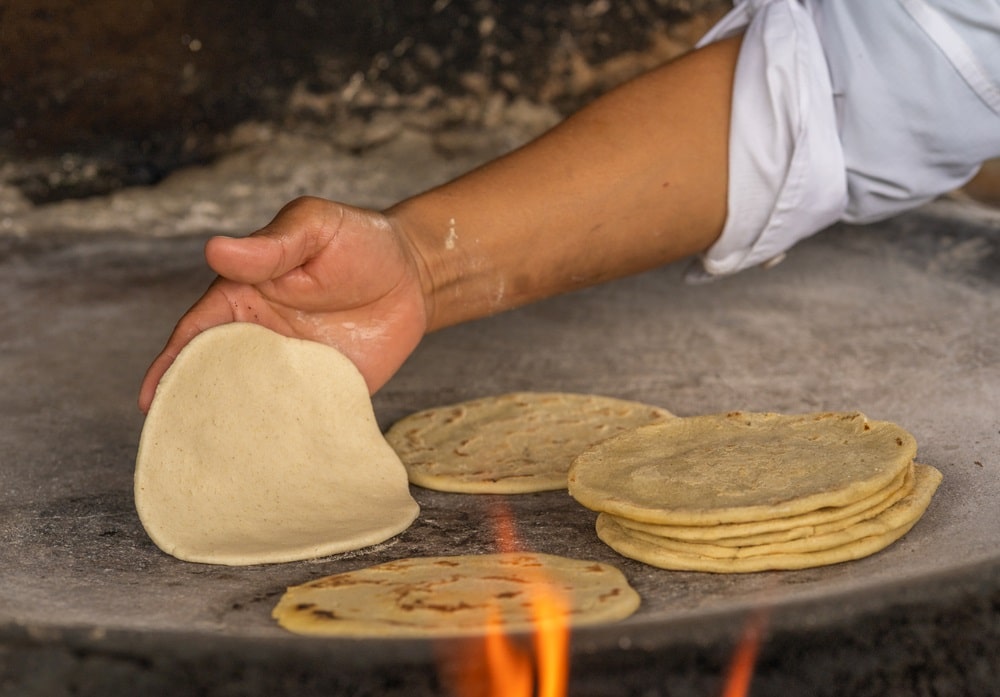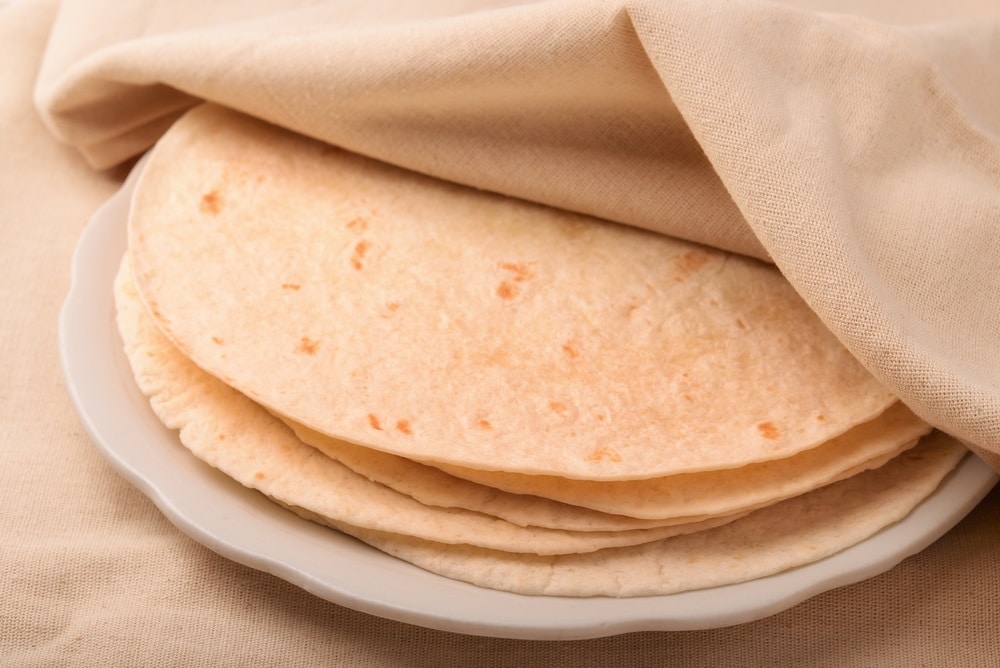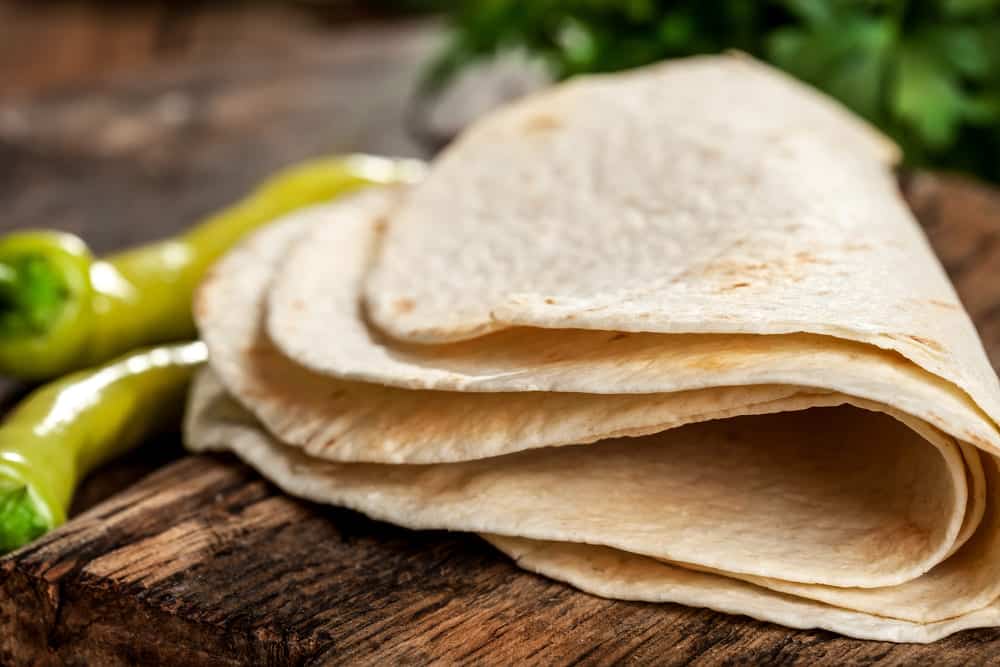
Homemade tortillas should be tender and chewy – never hard. They store well, so they can be made in advance and reheated in the microwave. This is useful if you’re entertaining a crowd!
Homemade flour tortillas are easy to make, especially if you have a mixer with a dough hook. In this case, you can mix up a batch of dough in just a few minutes.
However, the dough is also fairly easy to make by hand – just get out your wooden spoon.
The main thing is to allow the dough to rest a little after mixing it to give the gluten time to relax. This will make rolling your tortillas much easier.
Once the dough has rested (covered with a damp cloth) for about half an hour, simply divide it into portions, roll it out on a floured surface, and dry fry each tortilla in a hot pan.
While flour tortillas sound simple to make, there are some watchpoints to be aware of. Some of you have said that yours turn out hard and dry. We’re going to look at 8 possible reasons for this, so keep reading.
Ways To Use Flour Tortillas
- Use them for any Mexican meal, such as burritos, tacos, or enchiladas.
- They make wonderful pizza bases. Simply brush them with some tomato passata and add your favorite toppings. Bake them in a very hot oven for about 5 minutes until everything is golden and smells divine.
- Use flour tortillas to make wraps.
- Make them into chips. Brush them with a little olive oil, sprinkle with salt and bake in a very hot oven for about 5 minutes until golden and crispy. Use them for dipping into salsa or hummus.
Now that we’ve got you all excited about using these tortillas let’s look into the reasons why yours may be hard.
Why Are My Flour Tortillas Hard?
1. Dough Matters
While the dough needs to be worked to develop the gluten, you must not overwork it. Also, when you roll it out into circles, don’t handle it too much.
Simply roll a portion of dough into a ball, then roll it out into a flat, thin circle using a rolling pin. The dough should be soft but not sticky. If it’s difficult to work, it’s too dry, and you need to add a little more warm water.
2. Fat
Tortillas are a mixture of flour and water, but they also need a little fat. We recommend using a recipe with olive oil or butter.
Make sure you use a neutral-flavored oil and not something like peanut oil, as the tortillas will take on the oil’s flavor.
3. Rolling
The dough should only be rolled out after it has rested for a while. Once the dough has been mixed, cover it with a damp, clean tea towel and leave it for 15-30 minutes.
If you notice that the dough shrinks and pulls back when you roll it out, this is a sign that it hasn’t rested for long enough.
Make sure you roll the dough circles thin enough, as thick discs will be hard and dry rather than delicate and soft. You should be able to see the light through them when you hold them up.
Be careful not to put too much flour on your work surface when rolling the tortillas out. The dough will pick up the flour and become hard and stiff. A light sprinkling is all that’s needed.
4. Heat
It’s important to heat the pan properly before attempting to fry your tortillas. Low heat settings can make the tortillas hard as they take too long to cook, drying out in the process.
However, cooking them over extremely high heat can cause them to scorch and dry out. So, heat up the pan, then turn the flame down to medium for cooking.
If the tortillas feel stiff once they’re cooked, either the heat is too high, or you have cooked them for too long.
Cook them just long enough to obtain a few bubbles on top and some pale brown patches on the bottom. Turn them and cook for just twenty seconds more.
5. Steam
As each tortilla finishes cooking, pile them one on top of the other to allow them to steam one another. Cover the pile with a cloth. This will keep them soft and prevent them from drying out.
If you have one, a tortilla warmer can help to keep the tortillas steamed and soft. It is great for serving them at the table too. However, don’t despair if you don’t have one – you can just use a pot with a lid for storing them in.
6. Crisco
Please don’t use Crisco to make your flour tortillas. It is flavorless and greasy and will not enhance your tortillas. They will instead be oily and dry at the same time. Use butter or neutral oil.
7. Water Temperature
When mixing the tortilla dough, the water should be warm to hot. Using cold water will not melt the fat and will result in a stiff, difficult-to-work dough.
8. Incorrect Storage
Storing your flour tortillas incorrectly will cause them to become hard, stale, and dry. Never leave them open to the air. They can be kept at room temperature for 24 hours in a Ziploc bag or covered airtight container.
Alternatively, they can be packaged in the same way and kept in the fridge for up to a week. If you want to freeze them, separate them with pieces of baking paper or wax paper and put them in a Ziploc bag. They can be frozen for up to three months.
